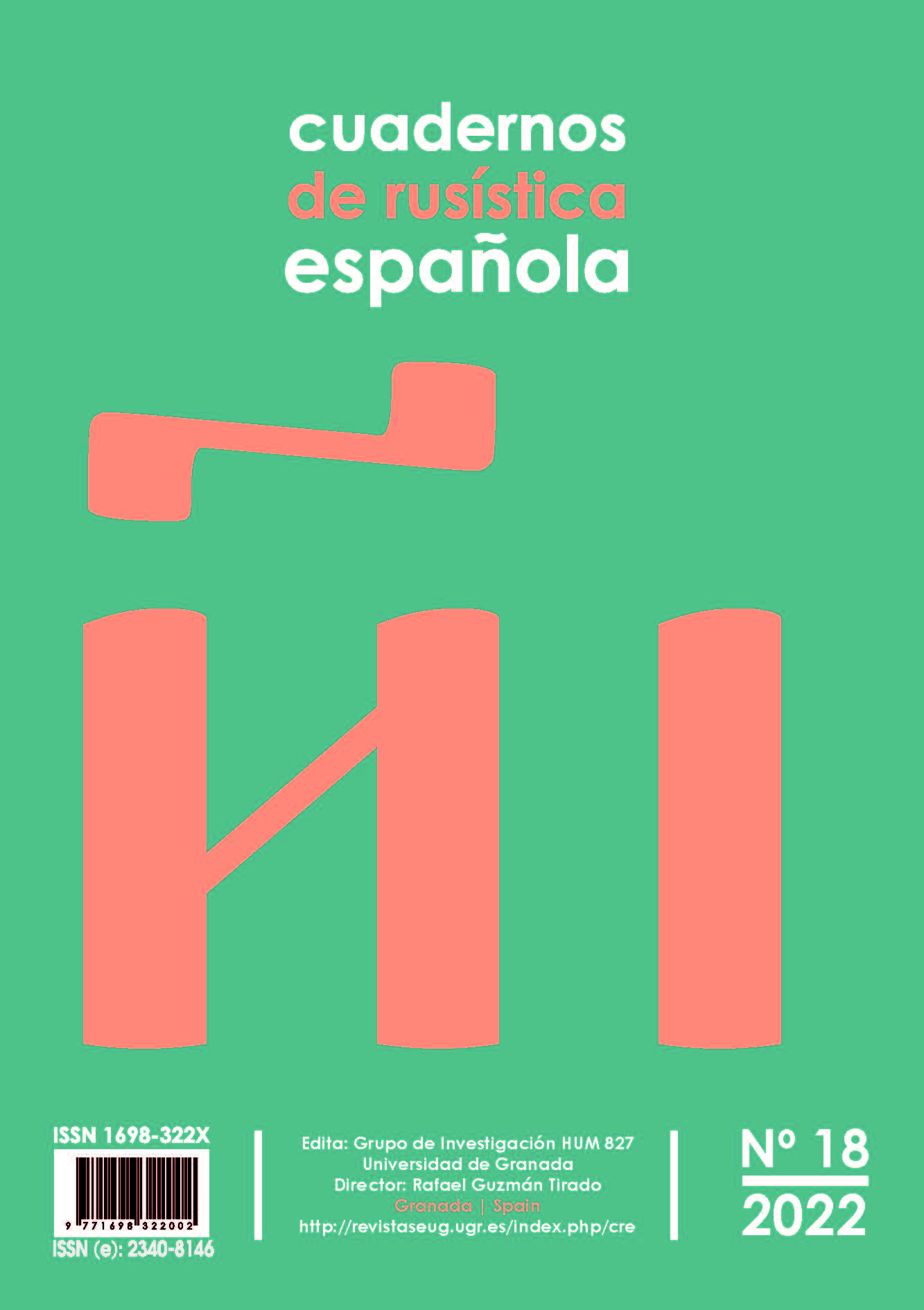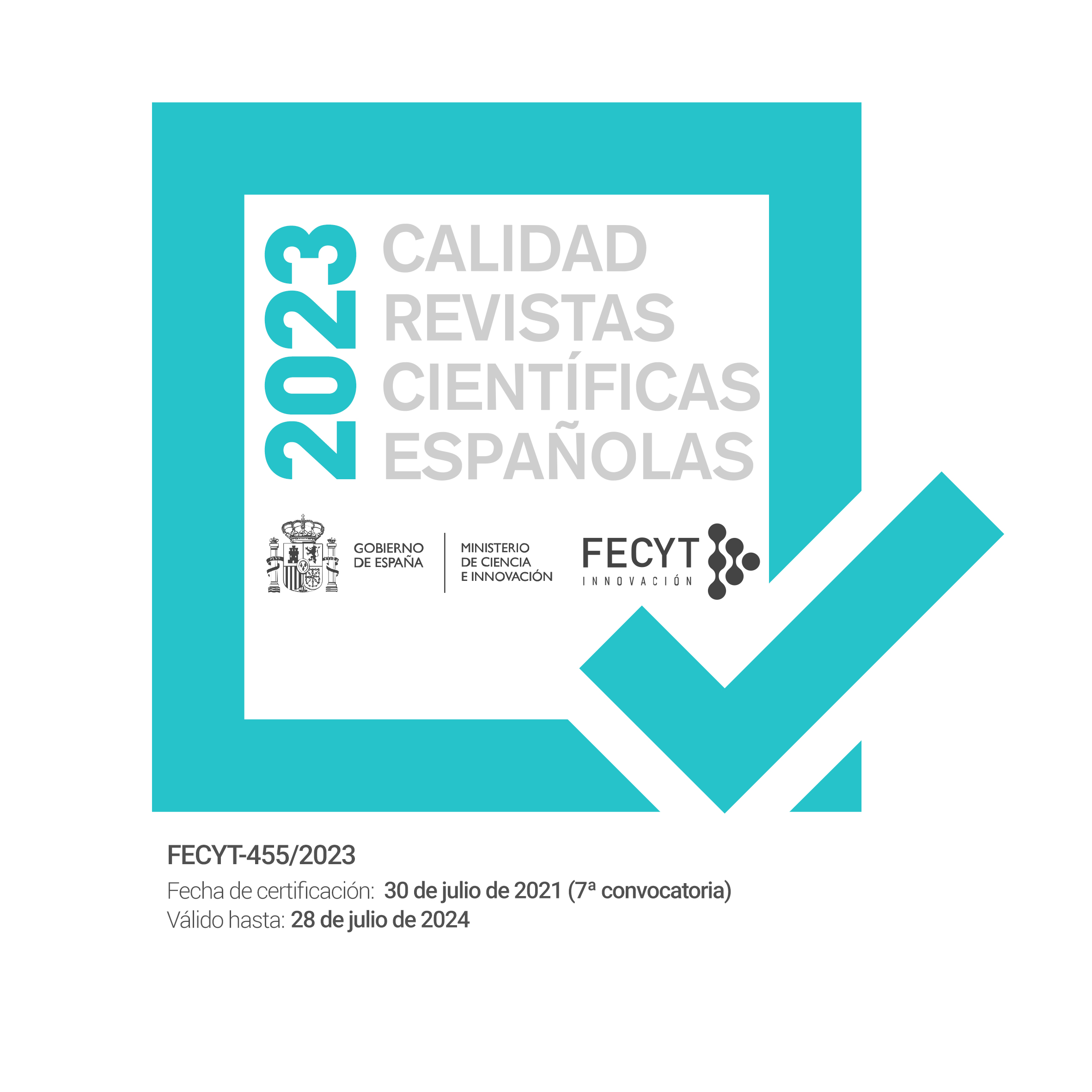The Image of Russia in the Russian Literature and Culture of the 1920s – 1930s
DOI:
https://doi.org/10.30827/cre.v18.24564Palabras clave:
Russian literature and culture of 1920s-1930s, the image of Russia, narrative space, chronotope, visual arts, the Commonwealth of Revolutionary WritersResumen
The article raises the problem of creating the image of Russia in the Russian literature and culture of the 1920s-1930s, outlines various aspects that constitute this image — historical, geographical, literary, linguistic, — establishes possible connections with the visual arts of those years, with the painting of the Russian avant-garde and constructivist architecture. In transitional periods, the relations between the old and the new culture, which is being formed, are the most tense and develop themselves in a dialectical dialogue. These complex relations between social ideas, the search for a new language, the word and its visualization are an important topic for the whole revolutionary culture. Various ideological and stylistic aspects of the "main" texts have been studied, but their connection to the literary ground of the 1920s and 1930s, their ideological-genre interaction with the huge corpus of less known texts from both the metropolis and the emigration is still unexplored. The phenomenon of "art life" together with the notions of the "literary life" and the "literary way of life" may give a more complete picture of the creative life in Russia during those years, whereas the inseparable link between the visual arts and the word and literature embodied in them has yet to be studied more fully.
Descargas
Citas
Andrej Bely`j – Ivanov-Razumnik. (1998). Perepiska. Sankt-Peterburg: Atheneum; Feniks.
Baxtin, M.M. (1975). Formy` vremeni i xronotop v romane. Ocherki po istoricheskoj poe`tike. V kn.: Baxtin M.M. Voprosy` literatury` i e`stetiki. Moskva: Xudozhestvennaya literatura.
Corney, Frederick C. (2004). Telling October. Memory and the making of the Bolshevik Revolution. Ithaca: Cornell University Press.
Delporte, Christian. (2009). Une histoire de la langue de bois. Paris: Flammarion.
Fatyushhenko, V.I. (2008). Russkaya lirika revolyucionnoj e`poxi (1912–1922 gg.). Moskva: Gnozis.
Fedotov, G.P. (1938). Russkij chelovek. Russkie zapiski. III. S. 239–261.
Gladkov, F. Cement. Krasnaya nov`. 2. 1925. S.75–112
Gorbachyov, O.V. (2018). Koncepciya «sovetskogo prostranstva»: ot material`nosti k mifu. V kn.: Sovetskij proekt. 1917–1930-e gg.: e`tapy` i mexanizmy` realizacii. Ekaterinburg: Izdatel`stvo Ural`skogo universiteta. S. 151–164.
Gorham, Michael S. (2003). Speaking in Soviet tongues: language Culture and the Politics of voice in Revolutionary Russia. Dekalb, Ill.: Northern Illinois University Press.
Grigor`ev, A. (1967) Kriticheskij vzglyad na osnovy`, znachenie i priemy` sovremennoj kritiki iskusstva. V kn.: Literaturnaya kritika. Moskva: Xudozhestvennaya literatura. S. 112–157.
Kaganskij, V.L. (2001). Kul`turny`j landshaft i sovetskoe obitaemoe prostranstvo. Moskva: Novoe literaturnoe obozrenie.
Karamzin, N.M. Istoriya gosudarstva Rossijskogo v 12-ti tomax. Moskva: Nauka, 1989. T. I. S. 14–15.
Kataev, I. Serdce. (1957а). V kn.: Kataev I.I. Izbrannoe. Moskva: Xudozhestvennaya literatura. S. 29–109.
Kataev, I. (1957b). Zernisty`j sneg. V kn.: Kataev I.I. Izbrannoe. Moskva: Xudozhestvennaya literatura. S. 184–194.
Korolenko, V.G. (2001). Dnevnik 1917–1921. Pis`ma. Moskva: Sovetskij pisatel`.
Lixachyov, D.S. (1979). Gl. IV. Poe`tika xudozhestvennogo vremeni. Gl. V. Poe`tika xudozhestvennogo prostranstva. V kn.: Poe`tika drevnerusskoj literatury`. Leningrad: Nauka. S. 209–334; S. 335–351.
Lunacharskij, A.V. Aktual`nejshie temy` xudozhestvennoj literatury` URL: Nasledie A. V. Lunacharskogo (newgod.su) Data obrashheniya: 29.04.2022.
Maly`shkin, A. (1928). Poezd na yug. V kn.: Fevral`skij sneg. Moskva: Federaciya.
Maly`shkin, A. (1928). Fevral`skij sneg. V kn.: Fevral`skij sneg. Moskva: Federaciya.
Ovcharenko, A.Yu. (2018). Rovesniki. Sodruzhestvo pisatelej revolyucii «Pereval» v istoriko-literaturnom processe 1920–1930-x godov. Moskva: E`kon-Inform.
Pakentrejger, S. (1925). A. Bezy`menskij. Krasnaya nov`. 8. S. 247–255.
Smirnov, N. (1931). Aleksandr Maly`shkin. V kn.: Aleksandr Maly`shkin. Moskva: Kooperativnoe izdatel`stvo pisatelej «Nikitinskie subbotniki». S. 155–185.
Sovetskaya literatura na novom e`tape. (1933). Stenogramma Pervogo plenuma orgkomiteta Soyuza sovetskix pisatelej (29 oktyabrya – 3 noyabrya 1932). Moskva: Sovetskaya literatura.
Sximmel`pe`nnink van der Oje, D. (2019). Russkij orientalizm: Aziya v rossijskom soznanii ot e`poxi Petra Velikogo do Beloj e`migracii. Moskva: ROSSPE`N.
Tam, vnutri. Praktiki vnutrennej kolonizacii v kul`turnoj istorii Rossii. (2012). Moskva: Novoe literaturnoe obozrenie.
Shafranskaya, E`. F. (2017). Fazy` kolonial`nogo diskursa v russkoj proze o Turkestane. Filologiya i kul`tura. 2(48). S. 218–224.
Voronskij, A. O Perevale i pereval`czax. Prozhektor. 4. 1925. S. 19–21.
Vyazemskij, P.A. (1927). Staraya zapisnaya knizhka. Leningrad: Izdatel`stvo pisatelej v Leningrade.
Zamoshkin, N. (1931). O smezhny`x i kasatel`ny`x storonax dialektiko-materialisticheskogo metoda v literature. Novy`j mir. 11. S. 175–194.
Zarudin, N.N. (1983a). Tridczat` nochej na vinogradnike. V kn.: Zarudin N.N. Put` v stranu smy`sla. Moskva: Xudozhestvennaya literatura. S. 21–243.
Zarudin, N.N. (1983b). Drevnost`. V kn.: Put` v stranu smy`sla. Moskva: Xudozhestvennaya literatura. S. 385–402.
Zarudin, N.N (1983c). Tridczat` nochej na vinogradnike. V kn.: Put` v stranu smy`sla. M Moskva: Xudozhestvennaya literatura. S. 506–523.












